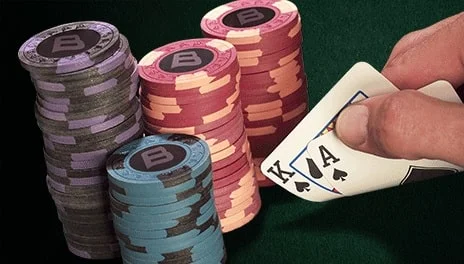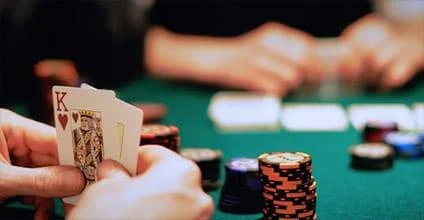Hottest Tournaments
Special Features
Play Real Money Poker at Bovada
If you’re interested in playing some real money poker, and you live just about anywhere in the United States, there’s no question that Bovada is your best option. No other poker website can give you the same combination of quality software, good games, online poker tournaments and payouts that are both fast and secure. At Bovada you can play Texas Hold 'em, Omana and Omaha Hi-Lo games online. Let’s look at what makes us the most important online poker room in the business.
Why Play Online Poker at Bovada
Bovada Poker is a proven leader in online poker since its inception in 2004. However, options for playing real money poker in the United States have been limited since 2011. If you live in Delaware, Maryland, Nevada, or New Jersey, your state has specific laws that preclude you from playing at Bovada Poker. If you live anywhere else, not only is Bovada your best option, it’s also your biggest, giving US customers access to the entire player pool on the PaiWangLuo Network. You’ll find good games running anytime, day or night, all from one of the most experienced and trusted sites in the online poker industry.
Basic Poker Tutorial
There was a time when nearly everyone grew up with a deck of playing cards. The internet has changed things, but poker is still the most popular card game in the world – especially No-Limit Hold’em, one of several poker variants you can play at Bovada. All these variants share the same basic rules: Players sit around a table, taking turns clockwise, and they get dealt cards at random from the standard 52-card “French” deck. Once the cards are dealt, players will take turns betting, using poker chips of various denominations. The bets are gathered into the middle of the table, forming the pot that will be claimed by the winner.
There are two ways to win a hand of poker. One, you can be the last person in the hand, after everyone else folds. Two, you can have the best hand at showdown, after all the betting is done and there’s at least one more player fighting with you over the pot. In the games available at Bovada, poker hands are graded using the standard rankings, as follows:
- Royal Flush (Ac-Kc-Qc-Jc-Tc)
- Straight Flush (8d-7d-6d-5d-4d)
- Four of a Kind (As-Ah-Ad-Ac-6s)
- Full House (Ks-Kh-Kc-Qd-Qh)
- Flush (As-Ks-Js-5s-3s)
- Straight (5h-4h-3d-2s-Ac)
- Three of a Kind (7s-7c-7d-Ah-2c)
- Two Pair (5s-5c-4c-4h-Jc)
- One Pair (9s-9c-Ah-8d-2c)
- High Card (Ah-Qs-7h-5s-3s)
If the players have the same ranking hand at showdown, the highest kicker is used as a tie-breaker. For example, if there are two players remaining and each has a Pair of Nines, the player who also has Ace-Eight-Deuce will beat the player who also has King-Queen-Jack. On rare occasions, two or more players will end up with exactly the same hand strength, even accounting for kickers. When this happens, the pot is split evenly among those players. This is known as a chopped pot.
There are other poker games where the lowest hand wins instead of the highest; these are called lowball games. In addition, there are split-pot games where half the pot goes to the high hand and the other half to the low hand. There’s a special split-pot game you can play at Bovada Poker that we’ll discuss in a moment, but for the most part, you’ll be trying to make the highest hand possible when you play at Bovada. Also, you’ll be playing “flop” poker, where you combine your hole cards with the community cards (dealt face-up in the middle of the table for everyone to use) to make your hand. More detailed rules are available for each of the games you can play at Bovada Poker.
How to Play Online Poker at Bovada
When you’re ready to play poker at Bovada, the first thing to do is open an account. There’s no sign-up fee; just fill out the brief one-page registration form, and you’ll be eligible to play across the full Bovada platform. Note that you have to be at least 18 years of age to play online poker at Bovada.
The next step depends on whether you’re playing on a desktop or a mobile device. For desktops, you have your choice of the Windows client or the macOS client. If you’re a mobile user, access the Bovada Mobile Poker web app from your tablet or smartphone. Once you’ve signed in, you’ll be ready to hit the tables – but first, take a moment to familiarize yourself with the software, and customize your settings as you see fit. Do you prefer a four-color deck? How about one of the new sports-themed layouts? It’s all at your fingertips.
How to Deposit and Play for Real Money
As soon as you’ve opened your account at Bovada Poker, you can access the play money games by switching on the Practice mode. Give these games a spin to help you get acquainted with your surroundings. Then, once you’re ready to play real money poker, it’s time to make your first deposit. Credit cards (Visa, Mastercard and American Express) and Bitcoin are both accepted at Bovada Poker; Bitcoin has zero transaction fees, plus a larger maximum deposit and faster turnaround times than credit cards.
Whichever deposit method you use, make sure to snap up the 100% Poker Welcome Bonus, where your first deposit is matched dollar-for-dollar, up to $500 in bonus money. Other deposit bonuses are available for use at Bovada Casino and Bovada Sportsbook, so check out all the promotions to ensure that you’re getting maximum value for your dollar.
Different Poker Games
There are many different ways to play poker, but today’s most popular games are Texas Hold’em and Omaha. You can play both of these flop games at Bovada Poker, using No-Limit, Pot-Limit and Fixed-Limit betting structures. Omaha Hi/Lo is also available, where the pot is split between the best high hand and the best low hand (using the “Eights or Better” rule). Most poker players prefer No-Limit Hold’em, but you’ll get more bang for your buck if you develop your skills at all three of these games.
At Bovada, you have your choice of playing these games as tournaments, or as cash poker. You may be familiar with poker tournaments from watching or playing at the World Series of Poker; everyone buys in for a specific amount, then that money is pooled together and awarded as prizes to the players who last the longest in the tournament. With cash poker, each hand you play is a discrete event – you can play one hand or several, and if you lose your stack, you can buy back in and keep playing.
Tournament poker at Bovada can be further broken down into two categories: multi-table tournaments (MTTs) and single-table tournaments (STTs), which are exactly what they sound like. STTs are typically played using the Sit-and-Go format; as soon as the table fills, whether it’s heads-up, 6-max or full-ring, the game begins. There’s also a special Jackpot Sit-and-Go for three players, where the winner takes home up to 1000X their buy-in. Turbo tournaments and Knockout tournaments are also available on the website
The cash games at Bovada Poker include the standard games, as well as a “fast fold” game called Zone Poker, where you get new hole cards at a new table as soon as you fold your hand. This allows you to play 2-3 times as many hands per hour as you can play at the regular cash tables. For even more volume, you can play up to two Zone Poker tables at the same time. For regular cash games, the maximum is four tables, and for tournaments, you can play up to 15 tables at once.
Video poker games are another popular alternative for the poker fans. They offer a unique casino experience experience for all poker players around the US.
Biggest Poker Tournaments
Online tournament poker has grown by leaps and bounds over the past 20 years, and Bovada Poker is a big reason why. There are daily and weekly guaranteed events, including one of the most important Sunday majors in online poker, the $200K Guaranteed. Bovada also hosts many of the most popular tournament series on the poker calendar: the Black Diamond Poker Open (BDPO), the Golden Spade Poker Open (GSPO), the Crypto Poker Open (CPO) and the Super Millions Poker Open (SMPO). Each of these festivals has millions of dollars in guaranteed prize money up for grabs, with over 100 poker tournaments to choose from.
There’s always more to learn when it comes to poker, but for now, you’ve got all the details on how to play poker online at Bovada. We’ve covered the reasons to choose Bovada Poker over everyone else, how to open an account and make your first deposit, and all the games you can play once you’ve joined. We’ve even covered the basic rules of poker for first-time players. To find out more, consult our archive of poker articles at Bovada, and don’t hesitate to call Customer Service if you have any other questions. Let’s get those cards in the air.
Poker Strategy
Whether you’re starting from Square One, or you just need to brush up your game with a few poker strategy tips, Bovada Poker is here to help. Our poker strategy section will take you through the fundamentals, showing you everything you need to build a winning game plan – no matter how new you are at poker. And if you’re an intermediate player looking to improve your results, we have some nuggets of wisdom that you can use to build an advanced poker strategy and take your game to the next level.
These tips and tricks are valuable for any player, but they’re especially valuable if you’re just starting out with the Beautiful Game. Our poker strategy for beginners can help you save both time and money while you learn the ins and outs of Texas Hold’em, Omaha and Omaha Hi/Lo. The concepts we’ll show you are easy to grasp; once you’ve played enough hands and gotten enough experience, you’ll be ready to tackle the more advanced concepts that today’s top pros are using at the tables. Poker is ultimately a game of skill – the more you learn, the better you’ll do, and the more fun you’ll have along the way.










